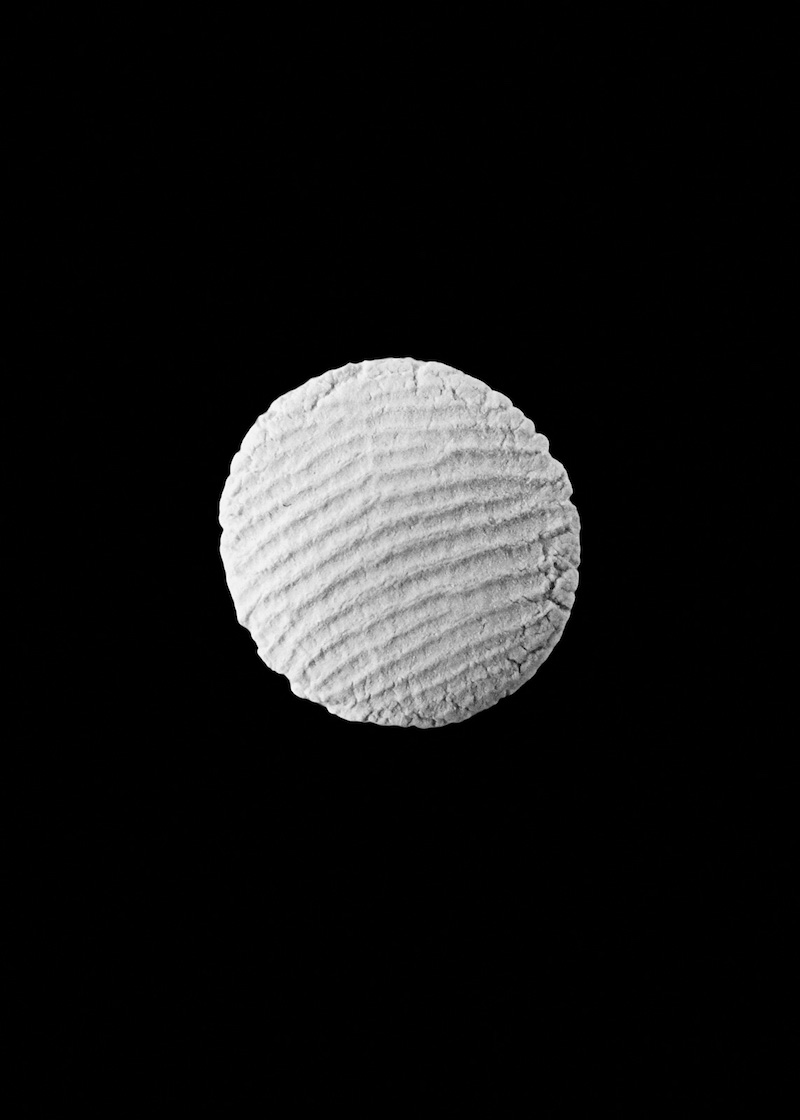Front page / …
Interview with Monika Dorniak for craftreaders.co.uk
see full article here
MD: Could you describe your work and your working tool(s)? Would you define yourself as a Craft-maker?
TN: In my 'Lumps of clay' works I am pressing little pieces of porcelain with my finger into a mould. One element, one action. This happens in one continuous line, attaching one lump to the other. My hands are the main tool here. No, I wouldn't define myself as a Craft-maker. Others may define my work, if they feel the need.
MD: What influenced your decision to choose your practice? How will you continue it after your graduation?
TN: I've been occupied with thinking in systems, frameworks or rules. At the same time, I have been interested in the relationship between built structures and existential experiences. Somewhere in between those worlds I began to develop my own vocabulary. One initial trigger has been a book about notation for new music (you might want to look up Earl Brown's '4 Systems'). Along the way I got inspired by Jan Schoonhoven's papier-mâché works or George Seurat's paintings. I read 'If on a winter's night a traveler' by Italo Calvino and Michel Serres' writings on multiplicity. And now I'm here. There has not been a clear decision. As long as it felt right I kept going, and I'm still going. Since graduation, chances are growing that I can show my work in a few galleries, along with opportunities to create new pieces. This is definitely something I want to foster. At the same time I will work on an empire of lumps.
MD: What is your point of view on the increasing integration of technology in our life? Does it have an impact on your work?
TN: Generally, I'm not so much concerned about an increase of technology. There are some very good inventions around. What is worrying me is the speed and hysteria in which this development is taking place. Today new technologies are introduced rapidly. And as technological developments have always been a catalyst for historical change, we are experiencing something like an acceleration of historical change. It has reached a point where eventually I won't be able to process the change within my own lifetime. I am becoming a restless wanderer. And I don't like this. For me it is important to remember that within all these developments we remain fragile beings, mysterious to ourselves. So I'm creating opportunities to step back, calm down and bethink. And why not, start from scratch, from a lump of clay. Yes, technology has an impact on my work.
MD: How does mind and body connect in your work?
TN: One aspect is contemplation. Through the physical interaction with the material I make sure that I'm fully there, with all my senses, no distraction. And in the repetitive action my mind starts to drift off, while somehow I remain very present. It's a moment of closure in which I gain autonomy, overcoming any preconceptions. Another aspect is knowledge. We all embody different types of knowledge. There is explicit knowledge, which you can measure and compute. And there is embodied knowledge, which you gain through sensory experiences. In fact, most of our knowledge is based on sensory experiences. Like you only really know if the stove is hot when you have touched it. So in the making I'm gaining knowledge which is hard to communicate with words but with the made object itself. I aim to make my objects inform about themselves in the most direct way, so they also become carriers of knowledge.
MD: Does the repetition of an exercise build control, or is control the catalyst for creating?
TN: When only control is the catalyst for creating, the outcome may be violent, a facade, forcing a material into your ideas. But I believe that everything has an essence of how it should be treated. And to get there you have to repeat, repeat, repeat. A lot of times I have prepared a mould, defined and precise, but as I worked within it I had to realise that it doesn't match the technique. They didn't need each other. The mould had to change. Now, the more I learn about the technique, the better the moulds fit. The gain of control through the making and the act of control when preparing a mould are become one and the same thing.
